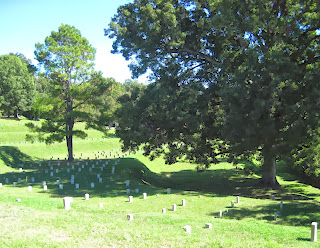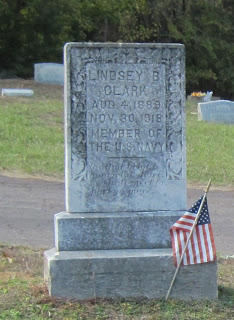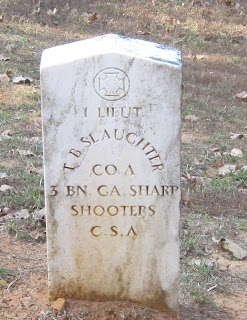 |
| Cemetery Entrance |
In 1818, Henry Rowe Schoolcraft, explorer, geographer and geologist, along with his assistant Levi Pettibone traveled up from the junction of Beaver Creek and the White River with two hunters who were said to be the most western settlers from there to the Rocky Mountain. On the first day of January, 1819, they reached their destination at the lead deposits on Pearson Creek which drained into the James River just east of present Springfield, Missouri. As they returned, they accidentally entered upper Bull Creek valley believing it to be Swan Creek valley. Bull Creek is another tributary of the White River. Schoolcraft’s notes of January 6th, 1819 detail the fact that they were confused and would not have entered Bull Creek valley had they not believed it to be Swan Creek. He recorded that Bull Creek valley was avoided by hunters and known to be a hilly, sterile region and considered a dangerous place in which to become lost, particularly in foggy weather when the sun cannot be seen, due to the similarity in appearance of the natural features of the terrain.
Settlement of the valley began in the early 1830’s by settlers from Kentucky and Tennessee. In 1833 James Kimberling built a water powered grist mill on Bull Creek, one of the earliest in the region. That same year marked the start of the Ozark Mail Trace Road between Springfield and the White River at the junction of Swan Creek. The first steamboat arrived in Batesville, Arkansas in 1831 and within a few years they were bringing salt and sugar to be traded for bear and beaver hides, lead ore, beeswax, cotton and bacon. This contributed to making the Mail Trace an important source of commercial traffic for the area.

Capt. John McCoy |

Elizabeth McCoy |

Rose Keeton Grave |

Hattie Cobb Grave |
 |
| Cobb-Keeton Cemetery |
Further along the lane that follows the Ozark Mail Trace through the hollow.
 |
| Lane through the hollow to the Cemetery |
 |
| Lane follows the Ozark Mail Trace built in 1830 |
 |
| The dogwoods further down the lane. |
 |
Bridge over Bull Creek |
 |
| The MK Trail |
Source of above information on Bull Creek history - Robert Kipfer, Springfield, Missouri.























